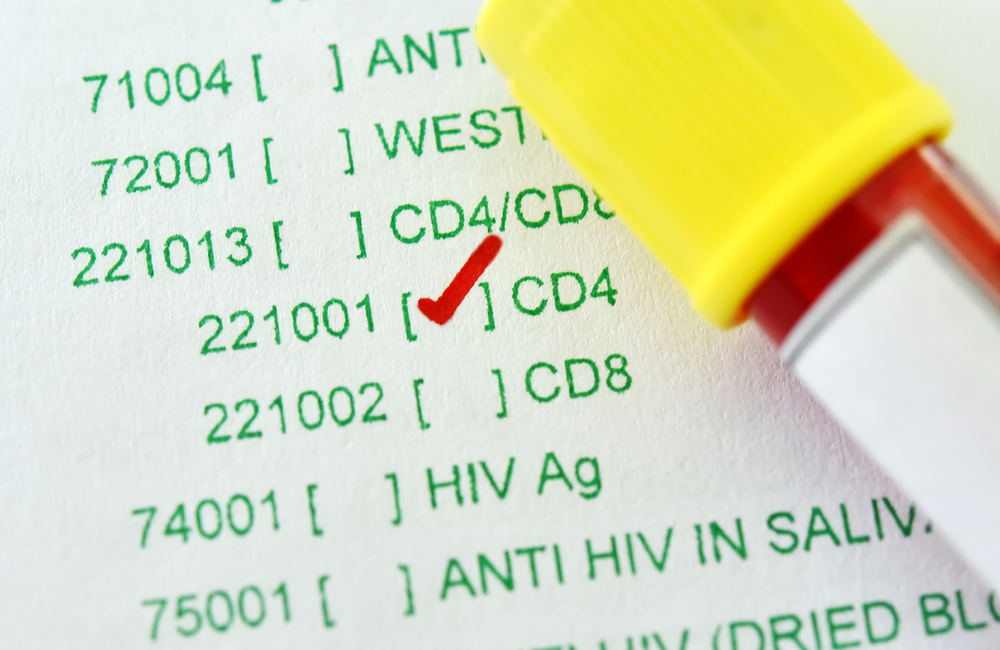
Immune suppression is associated with an increased risk of numerous infection-related cancers among people with HIV in South Africa, investigators report in Clinical Infectious Diseases. There was a strong association between a lower CD4 cell count and the incidence of Kaposi's sarcoma, non-Hodgkin lymphoma, cervical cancer and other cancers linked to human papillomavirus (HPV), as well as conjunctival cancer (a malignancy of the eye). In addition, there was some evidence that a lower CD4 cell count increased the risk of a small number of cancers not thought to be related to infections, especially cancer of the oesophagus (food pipe).
“Advanced immunodeficiency is associated with an increased risk of developing AIDS-defining cancers and various non-AIDS-defining infection-related cancers among a nationwide cohort of people living with HIV in South Africa,” write the authors. “Reducing HIV-induced immunodeficiency may be a potent cancer prevention strategy among people living with HIV in sub-Saharan Africa, a region heavily burdened by cancers attributable to infections.”
It has long been recognised that infection with HIV can increase the risk of developing several cancers. Rates of three cancers among people with HIV have historically been so high that they are considered AIDS defining: cervical cancer, Kaposi's sarcoma, and non-Hodgkin lymphoma. Each of these cancers has been linked to immune deficiency and also has an underlying viral cause: human papillomavirus (HPV), human herpes virus and Epstein Barr virus, respectively.
Rates of several other malignancies not considered AIDS-defining are also higher among people living with HIV. Once again, these often have a viral cause. They including anal cancer (HPV), liver cancer (hepatitis B or C) and Hodgkin lymphoma (Epstein Barr virus). There’s accumulating evidence that people with HIV are more vulnerable to these and several other infection-connected cancers if they have a suppressed immune system.
Most of the research exploring the relationship between immune suppression and cancer in people with HIV has been conducted in richer countries. An international team of investigators led by Dr Yann Ruffieux of the University of Bern wanted to investigate this link in South Africa, a country with a high burden of HIV and other infections known to be related to cancer. They examined data on a wide range of cancer types, including those not thought to be related to infections.
They therefore examined data from the South African HIV Cancer Match (SAM) study, which links the medical records of people with HIV with cancer records from the National Cancer Registry. Using data collected between 2004 and 2014, HIV-positive adults with at least one CD4 cell count and one year of subsequent follow-up were eligible for inclusion.
Just over 3.5 million people with HIV participated in the study. Of these 15,078 developed cancer over more than 9 million person years of follow-up.
The most common infection-related cancers were cervical cancer (4150 cases), Kaposi's sarcoma (1262 cases), non-Hodgkin lymphoma (1060 cases), HPV-related malignancies including anal, vulvar and head and neck cancer (692 cases), conjunctival cancers (604 cases), Hodgkin lymphoma and other Epstein Barr-related cancers (288 cases), stomach cancer (164 cases, potentially connected to helicobacter pylori infection), bladder cancer (122 cases, potentially linked to schistosomiasis) and liver and bile duct cancer (94 cases, linked to hepatitis B or C).
There were 5182 cancer diagnoses that were not considered related to an infection. The most common was breast cancer (1873 cancers), prostate cancer (440 cases), lung cancer (415 cases), colorectal cancer (384 cases), oesophageal cancer (370 cases) and melanoma (151 cases).
The median age at baseline was generally higher among the people developing cancer compared to those who did not develop a malignancy. For example, it was 33 years for people with Kaposi's sarcoma, 38 years for cervical cancer and 45 years for people with cancers not related to infections. In contrast, the median age for people who remained cancer free was 34 years.
Unsurprisingly, there was a strong, statistically significant relationship between immune suppression and the development of each of the AIDS-defining cancers. Each 100 cell reduction in CD4 cell count increased the risk of Kaposi's sarcoma by 23% (aHR = 1.23; 95% CI, 1.2-1.26), non-Hodgkin lymphoma by 18% (aHR = 1.18; 95% CI, 1.14-1.22) and cervical cancer by 7% (aHR = 1.07; 95% CI, 1.06-1.09).
Some other infection-related cancers also had a statistically significant relationship with immunosuppression: conjunctival cancer (aHR = 1.46; 95% CI, 1.36-1.54), liver and bile duct cancer (aHR = 1.11; 95% CI, 1.1-1.24) and HPV-related cancers other than cervical cancer (aHR = 1.08; 95% CI, 1.04-1.12).
Interesting, cancer of the oesophagus, not usually thought of as infection related, was also related to lower CD4 cell count (aHR = 1.06; 95% 1.1-1.11). Melanoma fell just short of statistical significance (aHR = 1.07; 95% CI, 0.99-1.16), as did colorectal cancer (aHR = 1.04; 95% CI, 0.99-1.09).
There was no association between immune suppression and several other cancers, including breast cancer, prostate cancer and lung cancer.
The study confirms the value of prompt antiretroviral therapy in preventing cancer.
Ruffieux Y et al. Immunodeficiency and cancer in 3.5 million people living with human immunodeficiency virus: the South African HIV Cancer Match Study. Clinical Infectious Diseases, published online ahead of print, February 2021.
